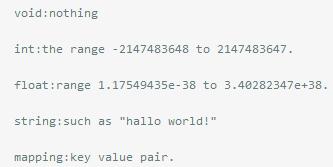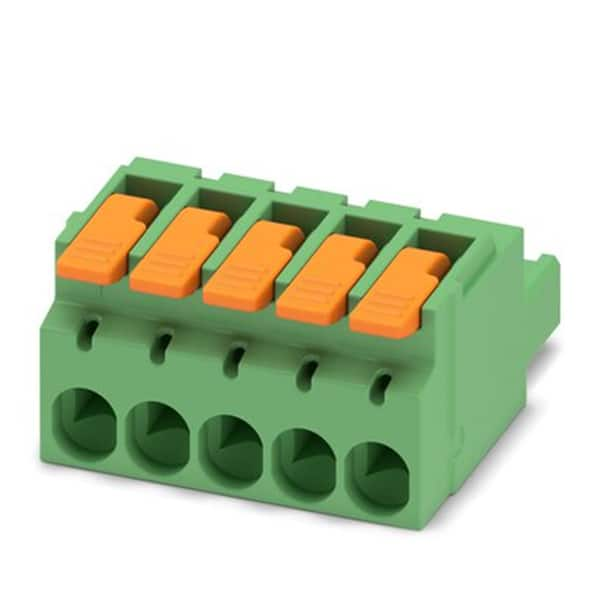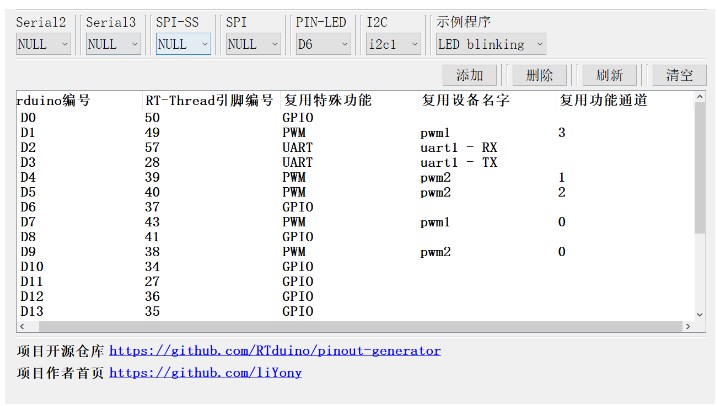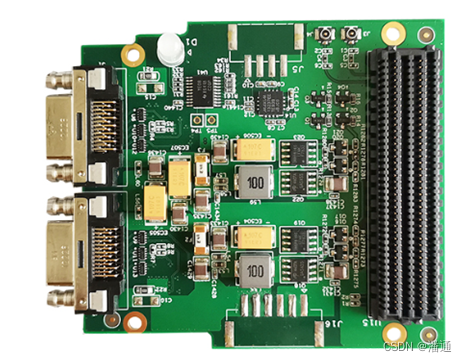完善資料讓更多小伙伴認(rèn)識你,還能領(lǐng)取20積分哦,立即完善>
標(biāo)簽 > LPC

LPC是線性預(yù)測編碼是一種非常重要的編碼方法。從原理上講,LPC是通過分析話音波形來產(chǎn)生聲道激勵和轉(zhuǎn)移函數(shù)的參數(shù),對聲音波形的編碼實際就轉(zhuǎn)化為對這些參數(shù)的編碼,這就使聲音的數(shù)據(jù)量大大減少。
LPC是線性預(yù)測編碼(linear predictive coding,LPC)是一種非常重要的編碼方法。從原理上講,LPC是通過分析話音波形來產(chǎn)生聲道激勵和轉(zhuǎn)移函數(shù)的參數(shù),對聲音波形的編碼實際就轉(zhuǎn)化為對這些參數(shù)的編碼,這就使聲音的數(shù)據(jù)量大大減少。在接收端使用LPC分析得到的參數(shù),通過話音合成器重構(gòu)話音。合成器實際上是一個離散的隨時間變化的時變線性濾波器,它代表人的話音生成系統(tǒng)模型。時變線性濾波器既當(dāng)作預(yù)測器使用,又當(dāng)作合成器使用。分析話音波形時,主要是當(dāng)作預(yù)測器使用,合成話音時當(dāng)作話音生成模型使用。隨著話音波形的變化,周期性地使模型的參數(shù)和激勵條件適合新的要求。
LPC是線性預(yù)測編碼(linear predictive coding,LPC)是一種非常重要的編碼方法。從原理上講,LPC是通過分析話音波形來產(chǎn)生聲道激勵和轉(zhuǎn)移函數(shù)的參數(shù),對聲音波形的編碼實際就轉(zhuǎn)化為對這些參數(shù)的編碼,這就使聲音的數(shù)據(jù)量大大減少。在接收端使用LPC分析得到的參數(shù),通過話音合成器重構(gòu)話音。合成器實際上是一個離散的隨時間變化的時變線性濾波器,它代表人的話音生成系統(tǒng)模型。時變線性濾波器既當(dāng)作預(yù)測器使用,又當(dāng)作合成器使用。分析話音波形時,主要是當(dāng)作預(yù)測器使用,合成話音時當(dāng)作話音生成模型使用。隨著話音波形的變化,周期性地使模型的參數(shù)和激勵條件適合新的要求。
LPC學(xué)習(xí)筆記
從lpc-tutorial下載tutorial,通過閱讀教程來學(xué)習(xí)LPC。
關(guān)于LPC
LPC被發(fā)明出來是一個用于LPMUD的解釋性語言。LPMUD其實就是一個游戲服務(wù)器,那么就很清楚了LPC是一個用來寫游戲服務(wù)器的腳本語言。
LPC這個名字暗示了和C語言的聯(lián)系。當(dāng)然兩者之間是有區(qū)別的,后面會漸次展開來講。
LPC游戲解析
一個LPC游戲可以劃分為三個部分:游戲驅(qū)動、mudlib、domain code。
游戲驅(qū)動:運行于主機(jī)上的程序。基本的對象管理核心和解釋器。它被用來理解LPC語言并執(zhí)行這些指令。
mudlib:LPC對象的集合。其中包含了基本的游戲環(huán)境。mulib里面的對象是最基本的游戲元素,比如玩家、怪物、房子等等。
domain code:???
語法入門
啥都別說了,看代碼。
while語句
while (test)
statement;
if語句
if (this)
{
statement;
}
else if (that)
{
another_statement;
}
else
{
default_statement;
}
定義變量
int a, b, c;
for循環(huán):
for (a = 0; a 《 10; a++)
{
b = function_call(a, b * 2);
c = b * 3 / 4;
}
空語句循環(huán):
while (!(var = func(var)))
;
for循環(huán):
for (i = 0; i 《 100; i++);
{
《code that gets executed only once, but always》
}
定義方法:
public void
my_function(int a, int b)
{
《 code 》
}
文件頭注釋:
/*
* 《filename》
*
* 《Short description of what the file does, no more than 5-7 lines.
* 。。.
* 。。. 》
*
* Copyright (C): 《your name and year》
*
*/
函數(shù)注釋:
/*
*
*
* Arguments: 《A list of all arguments, one per line
* arg1 - description no longer than the line.
* arg2 - next argument, etc. 》
* Returns: 《What the function returns》
*/
LPC基本語言概念
LPC不是編譯型的,而是解釋型的語言。
每次運行都被會重新解釋為機(jī)器語言。
其實這意味我們寫的是一種間接語言,通過特定的解釋器執(zhí)行特定的機(jī)器語言。
LPC語言的文件都是以.c為后綴的。文件名全部小寫,如果文件里面含有多個單詞,用下劃線_把單詞隔開。
LPC基本語法
注釋
// This is a comment stretching to the end of the line.
/* This is an enclosed comment */
數(shù)據(jù)類型
void:nothing
int:the range -2147483648 to 2147483647.
float:range 1.17549435e-38 to 3.40282347e+38.
string:such as “hallo world!”
mapping:key value pair.
object:references to LPC programs loaded into memory.
function:LPC functions.
array:all of things
mixed:all of type
變量聲明
int counter;
float height, weight;
mapping age_map;
int counter = 8;
float height = 3.0, weight = 1.2;
mapping age_map = ([]);
object *monsters = ({});
基本上語法和pike是差不多的,如果還沒入門最好先去看看pike。pike學(xué)習(xí)筆記
如果沒有為變量賦初值,那么變量會被賦值為0,相當(dāng)于其他語言的null,一般來說都不是我們希望看到的,所以哪怕賦值為空都好過沒有。
方法聲明
/*
* Compute the diameter of a circle given the circumference.
*
* Variables: surf_area - the surface area
* name - the name given the circle
* Returns: The circumference.
*/
float
compute_diam(float surf_area, string name)
{
float rval;
// Circumference = pie * diameter
rval = surf_area / 3.141592643;
write(“The diameter of ” + name + “ is ” + ftoa(rval) + “\n”);
return rval;
}
基本上對照上面的例子就知道怎么去聲明和定義一個方法了。
語句和表達(dá)式
就是一些算數(shù)、布爾、條件、比較操作符。跟pike差不多,不贅述了。
比較特別的是:
The statement ‘a = 1, 2, 3;’ will set ‘a’ to contain ‘1’。
一般我們寫if語句都這樣寫:
if (name == “fatty”)
{
nat = “se”;
desc = “blimp”;
}
else if (name == “plugh”)
{
nat = “no”;
desc = “warlock”;
}
else if (name == “olorin”)
{
nat = “de”;
desc = “bloodshot”;
}
else
{
nat = “x”;
desc = “unknown”;
}
更好的選擇其實是使用switch語句:
switch (name)
{
case “fatty”:
nat = “se”;
desc = “blimp”;
break;
case “plugh”:
nat = “no”;
desc = “warlock”;
break;
case “olorin”:
nat = “de”;
desc = “bloodshot”;
break;
default:
nat = “x”;
desc = “unknown”;
}
省了很多括號,而且更加清晰明了。
多用三元符號代替if-else語句:
int max(int a, int b)
{
if(a 》 b)
return a;
else
return b;
}
int max(int a, int b)
{
a 》 b ? a:b;
}
優(yōu)先級可以去查表:lpc優(yōu)先級查找
普通的循環(huán)語句就不再贅述了。
array
可以通過下面的方式聲明array:
int *my_arr, *your_arr;
float *another_arr;
object *ob_arr;
my_arr = ({})
雖然我覺得這種方式不太好。
可以聲明一個固定大小的array:
you_arr = allocate(3); // =》 your_arr = ({ 0, 0, 0 });
此外,如何想要在array后面或者前面添加元素,可以這樣:
int a = 3;
int *b = ({1,2});
b = b + ({a});
甚至還能切片,切片始終返回一個array:
my_arr = ({ 9, 3, 5, 10, 3 });
my_arr = my_arr[0..0] + my_arr[2..4]; // =》 ({ 9, 5, 10, 3 })
mapping
mapping就是鍵值對序列。
聲明一個mapping:
mapping my_map;
使用mapping的方法和pike一致。
比較特別的是,如果想刪除mapping內(nèi)的數(shù)據(jù),可以用這個:
my_map = m_delete(my_map, “bertil”);
my_map = m_delete(my_map, “david”);
此外,如果查找一個不存在的鍵值對,不會報錯,而是返回0.
預(yù)處理
預(yù)處理并不屬于LPC語言的一部分。在編譯為可執(zhí)行程序之前,預(yù)處理會將替換好所有的特定字符串。
導(dǎo)入源文件
當(dāng)我們需要一些其他源代碼文件提供的函數(shù)時,我們可以通過下面的方式來導(dǎo)入:
#include 《standard_file》
#include “special_file”
#include 《stdproperties.h》
#include 《adverbs.h》
#include “/d/Genesis/login/login.h”
#include “my_defs.h”
#include “/sys/adverbs.h” // Same as the shorter one above
基本上和C語言導(dǎo)入源文件是一樣的。
宏定義
偶爾我們會需要用字符串來代替數(shù)字或者表達(dá)式,比如說:
#define MAX_LOGIN 100 /* Max logged on players */
#define LOGIN_OB “/std/login” /* The login object */
#define GREET_TEXT “Welcome!” /* The login message */
一般來說,不建議寫宏。因為宏是無類型的,而且會在異常時無法確定到底是哪個地方出了問題。建議使用常量來代替宏,記得宏之所以還存在完全是為了向下兼容。
#if, #ifdef, #ifndef, #else and #elseif
直接看代碼吧:
#if CODE_VAR == 2
《code that will be kept only if CODE_VAR == 2》
#else
《code that will be kept only if CODE_VAR != 2》
#endif
#define CODE_VAR /* This defines the existence of CODE_VAR */
#ifdef CODE_VAR
《code that will be kept only if CODE_VAR is defined》
#else
《code that will be kept only if CODE_VAR isn‘t defined》
#endif
#ifndef CODE_VAR
《code that will be kept only if CODE_VAR isn’t defined》
#else
《code that will be kept only if CODE_VAR is defined》
#endif
感覺用這些有硬編碼的感覺,會增加理解代碼的難度,所以不推薦使用。
進(jìn)階篇
打印
1、write:自然不用在贅述了,相當(dāng)于printf。
2、dump_array:打印一個array所有值,調(diào)試的時候挺有用的。注意,pike里沒有這個函數(shù)。
函數(shù)調(diào)用
各種外部函數(shù)調(diào)用方式:
pie = math_ob-》compute_pie(1.0);
pie = “/d/Mydom/thewiz/math_ob”-》compute_pie(1.0);
pie = call_other(math_ob, “compute_pie”, 1.0);
pie = call_other(“/d/Mydom/thewiz/math_ob”, “compute_pie”, 1.0);
雖然后面三種也能調(diào)用函數(shù),但是這種代碼的可讀性太低了,完全應(yīng)該忘掉。
再來看看實際應(yīng)用時的情況:
object *people, *names;
mapping hp_map;
// Get a list of all players.
people = users();
// Get their names.
names = people-》query_real_name();
// Make a mapping to call with. Item = name:pointer
hp_map = mkmapping(names, people)
// Replace the pointers with hit point values.
hp_map = hp_map-》query_hp();
// All this could also have been done simpler as:
hp_map = mkmapping(users()-》query_real_name(), users()-》query_hp());
如何繼承一個對象類?
inherit “《file path》”;
// 比如說
inherit “/std/door”;
inherit “/std/room.c”;
//栗子
void
my_func()
{
/*
* This function exists in the parent, and I need to
* call it from here.
*/
::my_func(); // Call my_func() in the parent.
}
檢測變量類型
由于變量可能是0或者任意類型的東西,往往需要自己對變量做類型檢查。
@bullet{int intp(mixed)}
Test if given value is an integer
@bullet{int floatp(mixed)}
Test if given value is a float
@bullet{functionp(mixed)}
Test if given value is a function pointer
@bullet{int stringp(mixed)}
Test if given value is a string
@bullet{int objectp(mixed)}
Test if given value is an object pointer
@bullet{int mappingp(mixed)}
Test if given value is a mapping
@bullet{int pointerp(mixed)}
Test if given value is an array
類型限定符
static 變量:靜態(tài)的全局變量,聲明一次之后一直存在
static 函數(shù):只能內(nèi)部訪問,外部是不可見的
private 變量或函數(shù):不被繼承,只能對象內(nèi)部訪問
normal 變量或函數(shù):can not be mask?
public 變量或函數(shù):默認(rèn)的限定符,任何成員都可訪問內(nèi)部對象
varargs 函數(shù):可變參數(shù)數(shù)量的,按順序?qū)?shù)賦值,如果沒有則默認(rèn)賦值為0。
函數(shù)類型
函數(shù)也可以作為一個變量。
function my_func, *func_array;
my_func = allocate;
my_func = &allocate();
int *i_arr;
i_arr = allocate(5); // Is the same as.。。
i_arr = my_func(5); // 。。. using the function assignment above.
通過這種方式給函數(shù)重命名。
switch case
LPC的switch case支持int范圍:
switch (i)
{
case 0..4:
write(“Try again, sucker!\n”);
break;
case 5..6:
write(“Congrats, third prize!\n”);
break;
case 7..8:
write(“Yes! Second prize!\n”);
break;
case 9:
write(“WOOOOPS! You did it!\n”);
break;
default:
write(“Someone has tinkered with the wheel.。。 Call 911!\n”);
break;
}
catch throw
LPC和普通語言的try-catch方式捕獲異常是不一樣的:
int catch(function)
e.g.
//0-fail 1-true
if (catch(tail(“/d/Relic/fatty/hidden_donut_map”)))
{
write(“Sorry, not possible to read that file.\n”);
return;
}
throw(mixed info)
e.g.
if (test 《 5)
throw(“The variable ‘test’ is less than 5\n”);
mapping、array 引用
LPC的mapping、array與pike一樣是引用類型:
object *arr, *copy_arr;
arr = ({ 1, 2, 3, 4 }); // An array
copy_arr = arr; // Assume (wrongly) that a copy_arr becomes
// a copy of arr.
// Change the first value (1) into 5.
copy_arr[0] = 5;
//如果想要一份拷貝怎么做?
copy_arr = ({ }) + arr;
LPC/Mudlib接口
感覺到這里就是要開始學(xué)習(xí)如何實際使用LPC來編程了。前面的都只是基本的語法知識。
首先介紹:/std/object.c。游戲里所有的對象都會繼承這個基本類型。
其他類型有:
`/std/armour.c‘
Armour of any kind
`/std/board.c’
Bulletin boards
`/std/book.c‘
A book with pages you can open, turn and read
`/std/coins.c’
The base of all kinds of money
`/std/container.c‘
Any object that can contain another
`/std/corpse.c’
Corpse of dead monsters/players/npcs
`/std/creature.c‘
Simple living creatures, basically a mobile that can fight
`/std/domain_link.c’
Use this as a base to preload things in domains
`/std/door.c‘
A door that connects two rooms
`/std/drink.c’
Any type of drink
`/std/food.c‘
Any type of food
`/std/guild (directory)’
Guild related objects (the guild and the shadows)
`/std/heap.c‘
Any kind of object that can be put in heaps
`/std/herb.c’
Herbs
`/std/key.c‘
Keys for doors
`/std/leftover.c’
Remains from decayed corpses
`/std/living.c‘
Living objects
`/std/mobile.c’
Mobile living objects
`/std/monster.c‘
Monsters of any kind
`/std/npc.c’
A creature which can use ‘tools’, i.e. weapons.
`/std/object.c‘
The base object class
`/std/poison_effect.c’
Handle effects in poison of any kind
`/std/potion.c‘
Potions
`/std/receptacle.c’
Any kind of closable/lockable container
`/std/resistance.c‘
Handle resistance against various kinds of things
`/std/room.c’
Any kind of room
`/std/rope.c‘
Rope objects
`/std/scroll.c’
Scrolls
`/std/shadow.c‘
Used as base when creating shadows
`/std/spells.c’
Spell objects, tomes etc
`/std/torch.c‘
Torches/lamps etc
`/std/weapon.c’
Any kind of weapons
對象的使用
一個對象總是能夠得到自己的引用:
ob = this_object()
這個就類似于C++的this指針。
對象的函數(shù)能夠往前去查找調(diào)用此函數(shù)的對象(好神奇的感覺):
p_ob = previous_object(); // The object calling this function.
pp_ob = previous_object(-2); // The object calling the object
// calling this function.
甚至還能往前找指定層數(shù)的對象。
不過這個函數(shù)只能去找外部調(diào)用,如果我們想要更牛掰的話,用這個:
object calling_object(void|int step)
用法是一樣的,但是能夠找內(nèi)部也能找外部。
怎么去判斷找到的是一個合法的東西呢?(不是一個0)用objectp(something)就好了:
if (objectp(calling_object(-2)))
write(“Yes, an ob calling an ob calling this object exists!\n”);
else
write(“No such luck.\n”);
函數(shù)類型
在LPC里面,函數(shù)function也是一種對象,或者說變量類型。
可以像這樣定義一個函數(shù)指針:
function f = (: local_func :);
上面的 f 可以用于其他程序流程或外部函數(shù)中, 如同普通的變量值:
foo(f); map_array( ({ 1, 2 }), f);
或者可以直接執(zhí)行:
x = evaluate(f, “hi”);
等同于:
x = local_func(“hi”);
甚至于,定義函數(shù)指針時還能指定參數(shù):
function f = (: write, “Hello, world!\n” :);
evaluate(f);
顯然,會輸出:
Hello, world!
如果想要調(diào)用外部對象的函數(shù):
f = (: this_player(), ({ “query”, “short” }) :)
等同于:
f = (: call_other, this_player(), “query”, “short” :) /* 一個外部函數(shù)指針, 使用 call_other */
f = (: this_player()-》query(“short”) :) // 有效的運算式; 請見下文。
特殊的,運算式函數(shù)指針:
evaluate( (: $1 + $2 :), 3, 4) // 返回 7.
這可以用于 sort_array, 范例如下:
top_ten = sort_array( player_list,(: $2-》query_level() - $1-》query_level :) )[0..9];
不知名函數(shù)(函數(shù)內(nèi)部的函數(shù)):
void create() {
function f = function(int x) {
int y;
switch(x) {
case 1: y = 3;
case 2: y = 5;
}
return y - 2;
};
printf(“%i %i %i\n”, (*f)(1), (*f)(2), (*f)(3));
}作者:1angxi鏈接:http://www.jianshu.com/p/11a5a2afbf86來源:簡書著作權(quán)歸作者所有。商業(yè)轉(zhuǎn)載請聯(lián)系作者獲得授權(quán),非商業(yè)轉(zhuǎn)載請注明出處。



Phoenix Contact 用于電子應(yīng)用的 LPC 2,5 PCB 連接器
作者:Rolf Horn 投稿人:DigiKey 歐洲編輯 PCB 連接器是一種模塊化的絕緣裝置,可用于電路板的電氣連接。隨著對緊湊型高效電子設(shè)備需求的...

LPC55S69開發(fā)板對接RTduino的相關(guān)工作
RTduino 是基于 RT-Thread 框架下進(jìn)一步的封裝,使得用戶可以像開發(fā) Arduino 一樣快速上手。
在使用 lpc55s69_nxp_evk 開發(fā)板對接 rtduino 的過程,對接 PWM 部分的時候,遇到了不少坑,在此記錄。
LPC55S69對接RT-Thread PWM設(shè)備框架
在使用 RT-Thread 的 bsp pwm 的時候,注意到 lpc55sxx 系列只對接了通用定時器2中的通道1作為 PWM 輸出。但其實 LPC5...
eSPI總線是Intel在2016年推出的一種通訊總線,用于x86 CPU平臺和外設(shè)之間的通訊。
v4.0 版本新增了不少新型號的支持,囊括經(jīng)典的 i.MXRT、LPC 系列以及全新的 MCX 系列下最近發(fā)布的產(chǎn)品。
隨著超大規(guī)模集成電路的不斷發(fā)展,芯片的功能也愈發(fā)集中,在電子產(chǎn)品的系統(tǒng)中 “各司其職” 。在一個電子產(chǎn)品的硬件系統(tǒng)中,通常都是多個芯片協(xié)同工作,所以芯片...
類別:IC datasheet pdf 2024-08-09 標(biāo)簽:LPC
嵌入式實時操作系統(tǒng)μC/OS-Ⅱ在LPC1788上的移植及應(yīng)用立即下載
類別:電子資料 2023-10-23 標(biāo)簽:嵌入式LPC操作系統(tǒng)
英諾達(dá)發(fā)布RTL級功耗分析工具助推IC高能效設(shè)計
英諾達(dá)發(fā)布了自主研發(fā)的EnFortius?凝鋒?RTL級功耗分析工具,可以在IC設(shè)計流程早期對電路設(shè)計進(jìn)行優(yōu)化。

LS101x具有高度兼容主流EC應(yīng)用方案的特點,并內(nèi)嵌多種新型外設(shè),助力推動EC方案創(chuàng)新和應(yīng)用拓展,滿足更多市場需求。LS101x作為主處理器的從設(shè)備,...
英諾達(dá)發(fā)布了自主研發(fā)的靜態(tài)驗證EDA工具EnAltius?昂屹? DFT Checker,該工具可以在設(shè)計的早期階段發(fā)現(xiàn)與DFT相關(guān)的問題或設(shè)計缺陷。

全功能雙CameraLink SDR接口 FMC子卡QT7421介紹
QT7421是一款具有2個Camera Link SDR接口的全功能單寬FMC子卡模塊,它提供標(biāo)準(zhǔn)的工業(yè)相機(jī)鏈路接口,為用戶提供了利用FPGA解決大運算...
關(guān)于2023賽季RoboMaster機(jī)甲大師賽機(jī)器人用導(dǎo)電滑環(huán)
新賽季RoboMaster機(jī)甲大師賽即將打響,由于新賽季比賽規(guī)則發(fā)生了一些變更,所以參賽戰(zhàn)隊也不得不更新一部分機(jī)器人,英雄機(jī)器人、哨兵機(jī)器人、步兵機(jī)器人...
詳細(xì)講解LPC553x雙伺服電機(jī)控制方案的演示環(huán)境
項目中源文件(*.c)和頭文件(*.h)的總數(shù)較多。因此,我們只詳細(xì)介紹關(guān)鍵項目文件,其余的將被分組描述。
2022-08-25 標(biāo)簽:微控制器LPC伺服電機(jī)控制 1254 0
在所有的滑環(huán)類型中,只有高頻滑環(huán)具備高清視頻信號和高頻信號傳輸?shù)哪芰Γ?dāng)然,這兩種信號不能同時在一個高頻滑環(huán)內(nèi)傳輸。通常情況下,用以傳輸高清視頻信號的高...

基于LPC與LSF系數(shù)轉(zhuǎn)換的FPGA實現(xiàn)
首先根據(jù)切比雪夫多項式求根法對LPC系數(shù)到LSF系數(shù)轉(zhuǎn)換過程進(jìn)行分析與推導(dǎo),并給出了根據(jù)已知的LSF系數(shù)進(jìn)行逆推求
 換一批
換一批
編輯推薦廠商產(chǎn)品技術(shù)軟件/工具OS/語言教程專題
| 電機(jī)控制 | DSP | 氮化鎵 | 功率放大器 | ChatGPT | 自動駕駛 | TI | 瑞薩電子 |
| BLDC | PLC | 碳化硅 | 二極管 | OpenAI | 元宇宙 | 安森美 | ADI |
| 無刷電機(jī) | FOC | IGBT | 逆變器 | 文心一言 | 5G | 英飛凌 | 羅姆 |
| 直流電機(jī) | PID | MOSFET | 傳感器 | 人工智能 | 物聯(lián)網(wǎng) | NXP | 賽靈思 |
| 步進(jìn)電機(jī) | SPWM | 充電樁 | IPM | 機(jī)器視覺 | 無人機(jī) | 三菱電機(jī) | ST |
| 伺服電機(jī) | SVPWM | 光伏發(fā)電 | UPS | AR | 智能電網(wǎng) | 國民技術(shù) | Microchip |
| Arduino | BeagleBone | 樹莓派 | STM32 | MSP430 | EFM32 | ARM mbed | EDA |
| 示波器 | LPC | imx8 | PSoC | Altium Designer | Allegro | Mentor | Pads |
| OrCAD | Cadence | AutoCAD | 華秋DFM | Keil | MATLAB | MPLAB | Quartus |
| C++ | Java | Python | JavaScript | node.js | RISC-V | verilog | Tensorflow |
| Android | iOS | linux | RTOS | FreeRTOS | LiteOS | RT-THread | uCOS |
| DuerOS | Brillo | Windows11 | HarmonyOS |